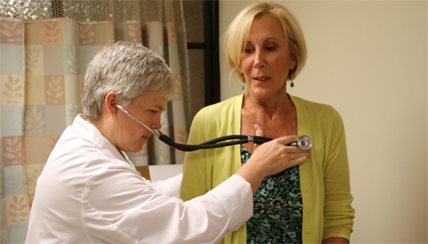NTM Infections: Causes, Symptoms, and Treatment
Nontuberculous mycobacteria (NTM) are a group of bacteria that can cause a range of infections in humans. Understanding the fundamentals of NTM is essential to safeguard your health and make informed decisions regarding treatment and prevention.
The Growing Relevance of NTM Infections
Recent developments in medical research have shed light on the increasing prevalence of NTM infections, making it crucial to stay informed about this emerging health concern.

nm
Types of NTM Infections
Classifying NTM: Varieties and Species
NTM comprises various species, each with unique characteristics and clinical significance. Exploring the different types of NTM infections and their impact on human health provides essential insights for patients and healthcare providers.
The NTM Spectrum: From Lung Infections to Skin Conditions
NTM infections can affect various parts of the body, but pulmonary NTM infections are among the most common. Learn about the diversity of NTM-related conditions, from lung infections to skin manifestations, to better recognize potential symptoms.
Symptoms and Signs of NTM Infections
Detecting NTM Infections: Common Symptoms
NTM infections can manifest with various symptoms, often resembling those of other respiratory or skin conditions. Recognizing the typical signs, such as chronic cough, fatigue, and respiratory issues, is essential for early diagnosis and treatment.
Understanding Variations: Symptoms Based on NTM Species
Different NTM species can lead to distinct symptom profiles. Delve into how specific NTM species may cause unique symptoms, allowing for more precise diagnosis and tailored treatment.
Diagnosis and Testing
The Diagnostic Puzzle: Methods for NTM Diagnosis
Diagnosing NTM infections requires a multifaceted approach, including clinical evaluation, imaging, and laboratory tests. Discover the various methods used by healthcare providers to confirm NTM infections.
The Importance of Precision: Accurate Diagnosis for Effective Treatment
Accurate and timely diagnosis is critical for effective NTM treatment. Explore the significance of early diagnosis and the role of advanced diagnostic techniques in improving patient outcomes.
Treatment Options
Unlocking the Toolbox: Antibiotic Therapies for NTM Infections
NTM infections are notoriously challenging to treat. Learn about the primary treatment approach, which often involves a combination of antibiotics tailored to the specific NTM species causing the infection.
Navigating Challenges: The Road to NTM Recovery
While treatment is available, managing NTM infections can be complex. Discuss the potential challenges patients may encounter during treatment, emphasizing the importance of a comprehensive care team.
Living with NTM Infections
Daily Life with NTM: Coping and Adjustment
Living with NTM infections can impact an individual’s daily life. Explore the challenges and adjustments patients may need to make, including lifestyle changes and emotional support.
Self-Care Strategies: Navigating the NTM Journey
Patients with NTM infections can benefit from adopting self-care strategies to manage their condition effectively. Discuss practical tips for self-care, including diet, exercise, and mental health.
Prevention and Outlook
Shielding Against NTM: Prevention Strategies
Preventing NTM infections is essential, especially for individuals with compromised immune systems. Discover effective prevention strategies, including water safety measures and hygiene practices.
The NTM Landscape: Current Status and Future Prospects
Stay informed about the current status of NTM research and the outlook for patients. Discuss any recent advancements in NTM prevention and treatment, providing hope for those affected.
FAQs regarding NTM (Nontuberculous Mycobacteria):
FAQ 1: What are NTM infections?
Answer: NTM infections are caused by a group of bacteria known as Nontuberculous Mycobacteria. These bacteria are naturally found in the environment and can lead to various infections in humans.
FAQ 2: What are the common symptoms of NTM infections?
Answer: Common symptoms include chronic cough, fatigue, fever, weight loss, and respiratory issues. However, symptoms may vary depending on the type of NTM infection.
FAQ 3: How are NTM infections diagnosed?
Answer: Diagnosis typically involves clinical evaluation, imaging (such as chest X-rays), and laboratory tests, including sputum cultures and molecular testing.
FAQ 4: Are NTM infections contagious?
Answer: NTM infections are usually not contagious from person to person. They are primarily acquired from the environment.
FAQ 5: Can NTM infections be treated?
Answer: Yes, NTM infections can be treated. Treatment often involves a combination of antibiotics, tailored to the specific NTM species causing the infection.
FAQ 6: What is the outlook for individuals with NTM infections?
Answer: The outlook varies depending on factors like the type of NTM infection, overall health, and timely treatment. Early diagnosis and treatment can lead to better outcomes.
FAQ 7: Are there any preventive measures for NTM infections?
Answer: Preventive measures include maintaining good hand hygiene, avoiding contaminated water sources, and practicing proper water safety.
FAQ 8: Can NTM infections recur after treatment?
Answer: Yes, in some cases, NTM infections can recur after treatment. Close monitoring and follow-up care are essential to detect and manage recurrences.
FAQ 9: Is NTM infection more common in certain geographic regions?
Answer: NTM infections are more prevalent in some regions, but they can occur worldwide. Geographic factors and environmental conditions may influence the risk.
FAQ 10: Where can I find more information and support for NTM infections?
Answer: You can find additional information and support from healthcare providers, patient advocacy organizations, and reputable medical sources. These resources can offer guidance and assistance for individuals affected by NTM infections.
Conclusion
In conclusion, NTM infections represent a complex medical challenge. Recap the key information about NTM, from its causes and symptoms to diagnosis, treatment, and prevention. Highlight the importance of knowledge and awareness in dealing with NTM infections. Encourage individuals to seek medical advice if they suspect NTM symptoms and emphasize that early intervention can lead to better outcomes.




